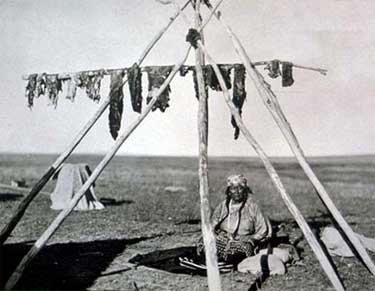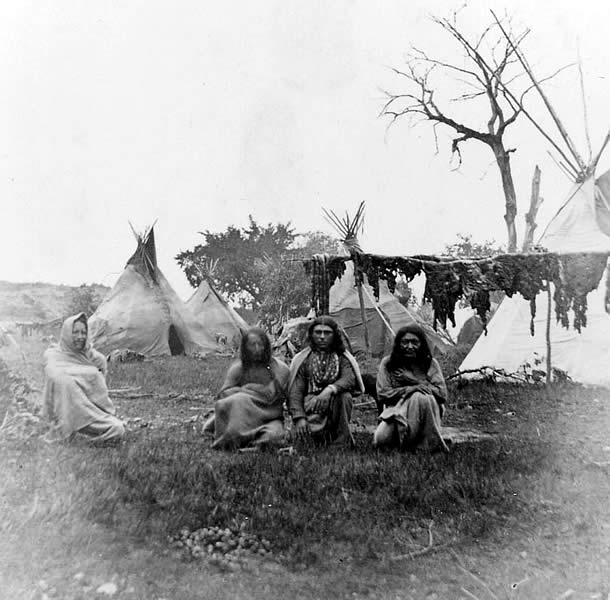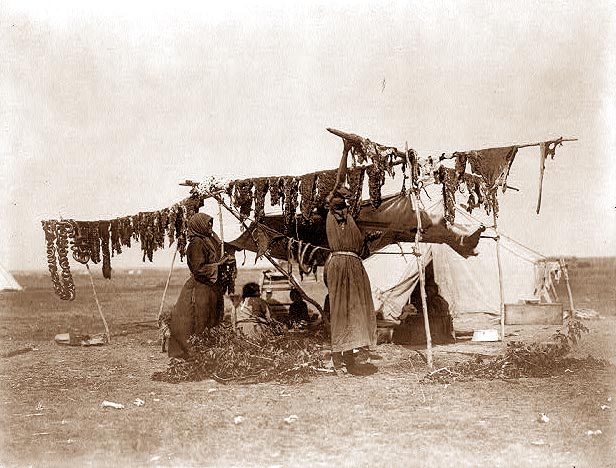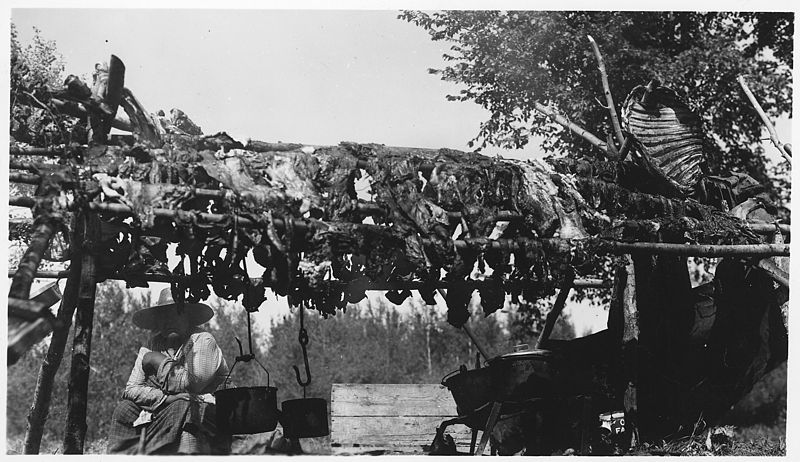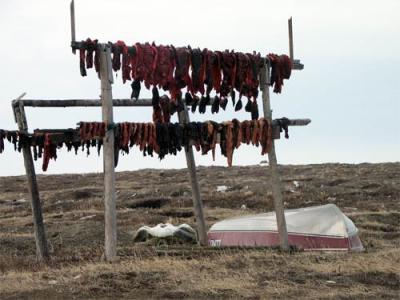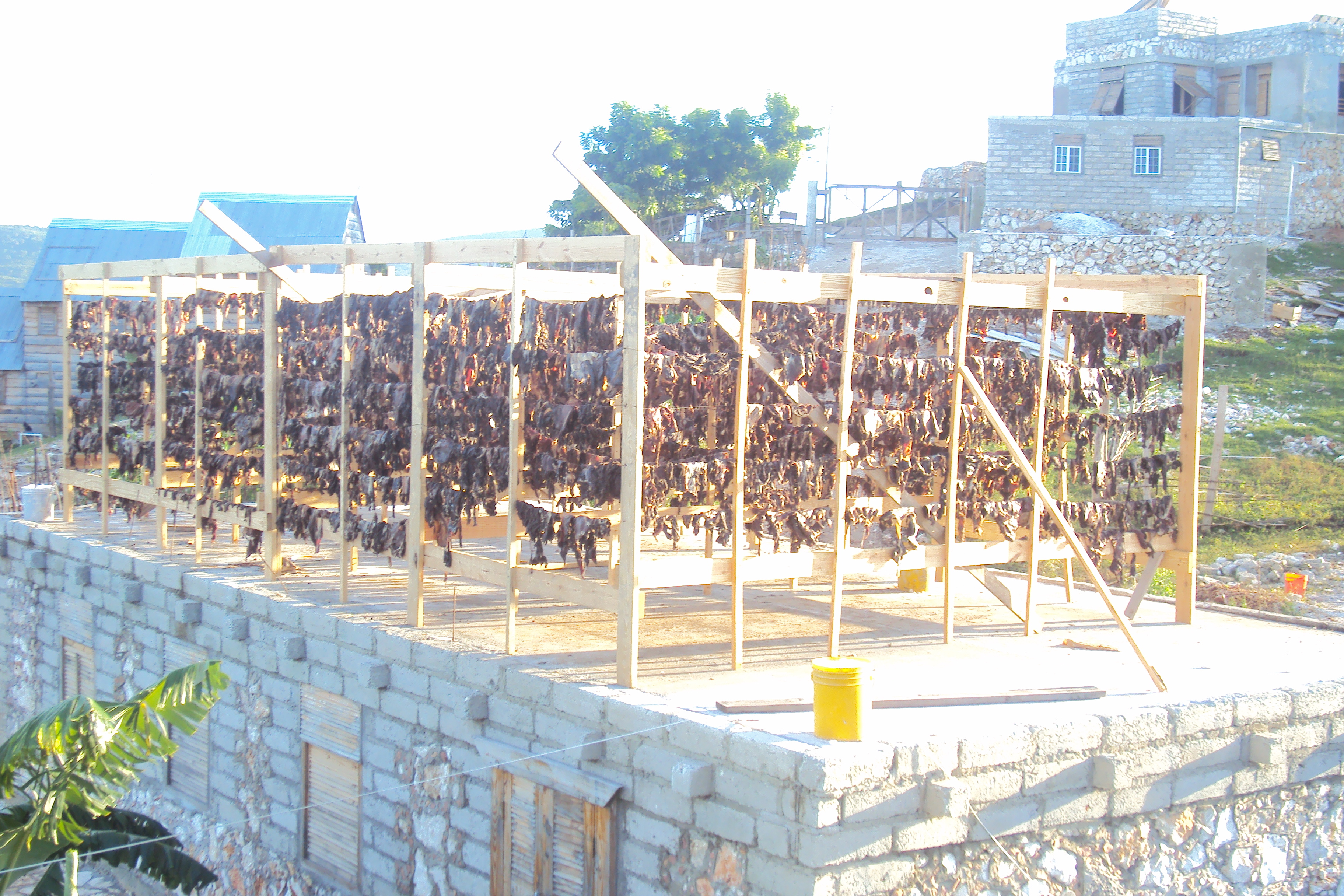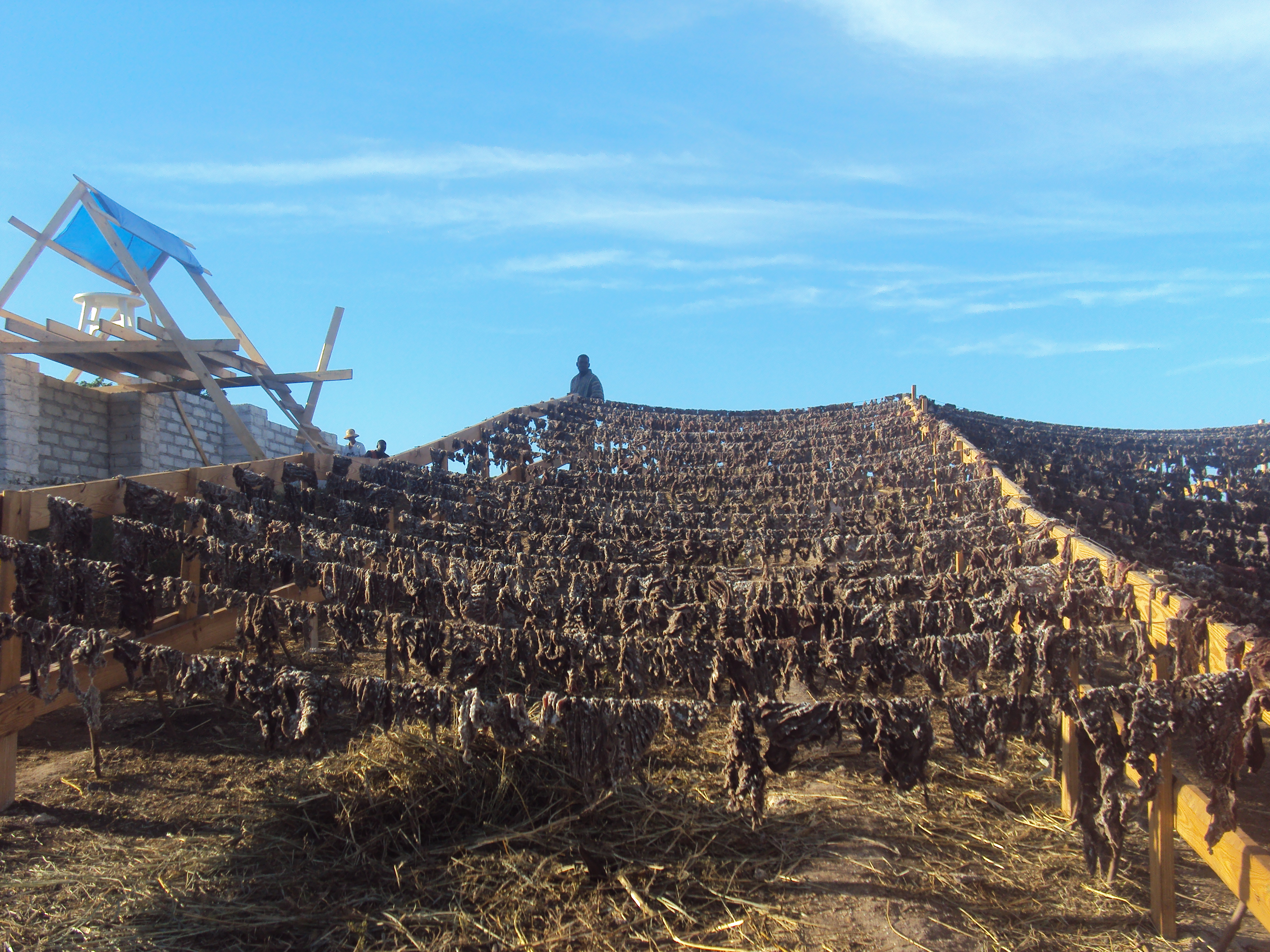Here's one description which might qualify. It's from the journal of John Joseph Henry with Benedict Arnold's army on the march to Quebec, somewhere in Maine, fall of 1775.
They killed a moose and he wrote...."It was immediately concluded to preserve our provisions by jerking. This operation is done by slicing the meat into thin strips. Then driving four forks into the earth, in a square position, at the required distance perpendicularly, and laying poles from fork to fork, and poles athwart from pole to pole. A rack is thus made, about four feet high, on which the sliced meat is laid, and smoke-fires are made underneath."
From the Shane interview with Col. John Graves, speaking of the northern Kentucky frontier about 1786:
"We were all minutemen ex-officio. A little parched corn kept in a little bag & some jerked venison in another (venison cut in thin slices and cured over the fire) and a horse standing in the stable. When you seen a man coming all you wanted to know was where you were marching."
Spencer Records 1784
". . . we skinned the bull (buffalo), and cut off all the meat in broad thin pieces, which we laid on the hide, and sprinkled salt thereon, letting it lay till we made a long (burning) fire. We then put a row of forks on each side of the fire, and placed poles on the forks. Small sticks were then laid on them, and the meat laid on the sticks over the fire, where it remained until half cooked; it was then turned over and left to lay till morning, for by this time it was in the night . . . In the morning, we put
the meat in bags and carried it home."
From Nicholas Cresswell's journal, on the Ohio river headed for Kentucky, 1775:
"All hands employed in curing our Buffalo meat, which is done in a peculiar manner. The meat is first cut from the bones in thin slices like beefsteaks, then four forked sticks are stuck in the ground in a square form, and small sticks laid on these forks in the form of a gridiron about three feet from the ground. The meat is laid on this and a slow fire put under it, and turned until it is done. This is called jerking the meat. I believe it is an Indian method of preserving meat. It answers very well, where salt is not to be had, and will keep a long time if it be secured from the wet."
Peter Henry, 1780:
"The Indians killed a bear and two does that day . . . they brought the meat of all to the camp that evening, and some of them was busily engaged in cutting the meat off the bones and drying it on a little rod or stick over the fire to make what the Indians call Jerk--dried meat to carry with them."
". . . one of the Indians . . . attended . . . continually throughout the night to drying their meat, making Jerk of it so as to carry it with them."
Spence





